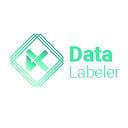Image Annotation Types
Image Annotation helps to build accurate object detection models mainly used for Computer Vision projects. In this blog, we will take a look at what is Image Annotation and its types.
What is Image Annotation?
Simply put, Image Annotation is the labeling of an image either in the form of one label for the entire image or numerous labels for every object in an image. It is a marking tool that highlights an object or content in an image sketching around it.
Types of Image Annotation
Let’s take a look at some of the common Image Annotation types used for Computer Vision projects;
Bounding Box
Bounding Box annotation involves drawing a box around objects within an image. The image is marked as per the custom requirements of data-scientists and mostly involves drawing a box as close to the edges of the objects as possible.
Being one of the most commonly used image annotation techniques, it plays a major role in training autonomous vehicle models by tagging entities like vehicles, cyclists, pedestrians, and other obstacles within a traffic image.
Cuboid Annotation
Similar to bounding boxes, cuboid annotation involves sketching a box around objects in an image. Bounding boxes helps to depict the length & width of an object whereas cuboid annotation highlights the objects in 3D, depicting the length, width, and depth of the objects.
Cuboid Annotation is mainly used in the field of construction and building structure where it is used to get the accurate dimension of objects. It is also used for annotating medical images mainly in the field of radiation imaging.
Line Annotation
Line Annotation is used for training Machine Learning models to detect boundaries and lanes by drawing lines on roads or streets. The most common application of Line Annotation is in annotating sidewalks and road lanes for training the autonomous vehicles to stay in one lane without veering and to understand the boundaries.
Landmark Annotation
Also known as Dot Annotation, it helps to identify the dissimilarities between objects and count the miniature objects in an image. It is used for detecting distant objects in satellite images, identifying the different poses of athletes and predict the motion of the pedestrians for training self-driving cars.
Semantic Segmentation
Semantic Segmentation is also called as pixel-level labeling and is more precise and specific. The other types of image annotation mainly dealt with outlining the outer edges of an object whereas Semantic Segmentation involves labeling every pixel in a given image.
It helps to divide an image into multiple segments thus helping to depict an image in a more meaningful way. This type of image annotation is used for training autonomous driving models, classifying visible terrain in satellite images, analyzing medical images and in industrial inspection.
Polygonal Segmentation
Being one of the smartest and fastest ways to annotate objects for Machine Learning, Polygonal Segmentation helps to detect the boundaries of an object with optimum precision. It helps in the accurate estimation of the shape and size of the objects mainly captured from distant cameras.
Polygonal Segmentation is used for more detailed recognition of objects such as detecting street signs, facial features and logos.
These are some of the common image annotation types used for training machine learning models. If you are planning to outsource your image annotation workload, contact Data Labeler, the one-stop-shop for all your data labeling needs.
Originally published at http://datalabeler.com on July 30, 2019.
